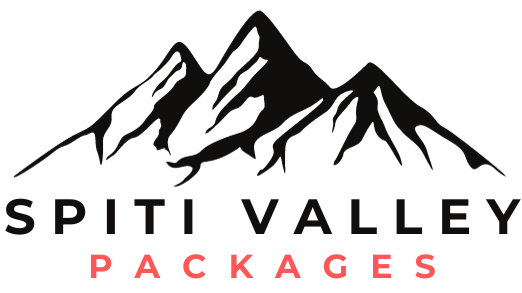Kunzum Pass (Kunzum La) is an absolutely spectacular high mountain pass between the Lahaul and Spiti region of Himachal Pradesh in India. It connects the more raw Gramphu–Batal side of the pass to the lower Losar–Kaza side, and is part of the classic Manali–Spiti traverse.
With visitors drawn in to see the vast ridge line views, visit the small Kunzum Devi Temple, and when open, the option to go to Chandratal before or after a visit to the pass.
This guide is about pure evergreen/capturing practical considerations—seasonal artery status, ideal timing to make the journey, approaches from Manali and Kaza in handwritten detail, vehicle suitability, safety tips and AMS basics, costs and micro-itineraries.
If you are making a shoulder season attempt in November (or the shoulder in between November to December), do pay attention to caution and above all adhere to a conservative turn-back policy.
Quick Facts (at a glance)
- Altitude: ~4,551 meters (14,931 feet).
- Region: Himachal Pradesh (Lahaul–Spiti).
- Link: Gramphu/Batal (Lahaul) ↔ Losar/Kaza (Spiti)
- Approximate distance from Manali (via Atal Tunnel→Gramphu): about 120–140 kilometers, depending on travel conditions, weather, detours, etc.
- Approximate distance from Kaza (via Losar): about 75–80 kilometers.
- Typical opening timing: approximately June to October/ early November, with variations due to any additional snowfall and for removal timing.
- Last reliable fuel ATM/network for the Manali side: Manali and Sissu.
- Last reliable fuel ATM/network for the Spiti side: Kaza.
- Driving time : Driving time when in the best and most predictable operating conditions generally August–September; post-October–November the operating conditions will be problematic with frost and shortening days.
Route Status & Seasonality
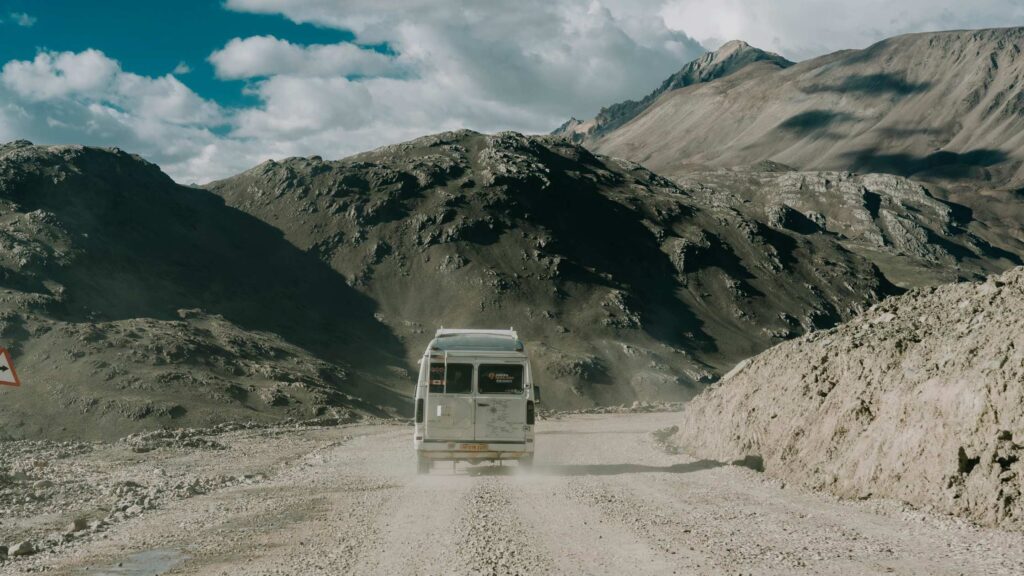
- What controls openings: overtopping and freeze-thaw cycles, risks for avalanches, priorities for clearing snow on and around Border Roads Organisation. A single western disturbance can change ‘open’ to ‘closed’.
- Regular patterns: reopens in June, stable for the summer until August-September, a rise in uncertainty for October-November: when a single storm takes a closed road with delayed reopening, mostly a few days, or possible closure.
- Understanding ‘partially open’: travel only during daylight hours; you are escorted or use a convoy on sections of road; or allow only restricted vehicles, usually some 4×4’s types, with a layer on top of snow soft until the route below gets more stable.
- Mindset for planning: try to do crossings in the early morning; avoid risking late day movement; always keep at least a spare day in the shoulder months; and never expect what was successful yesterday will be successful again today.
How to Reach
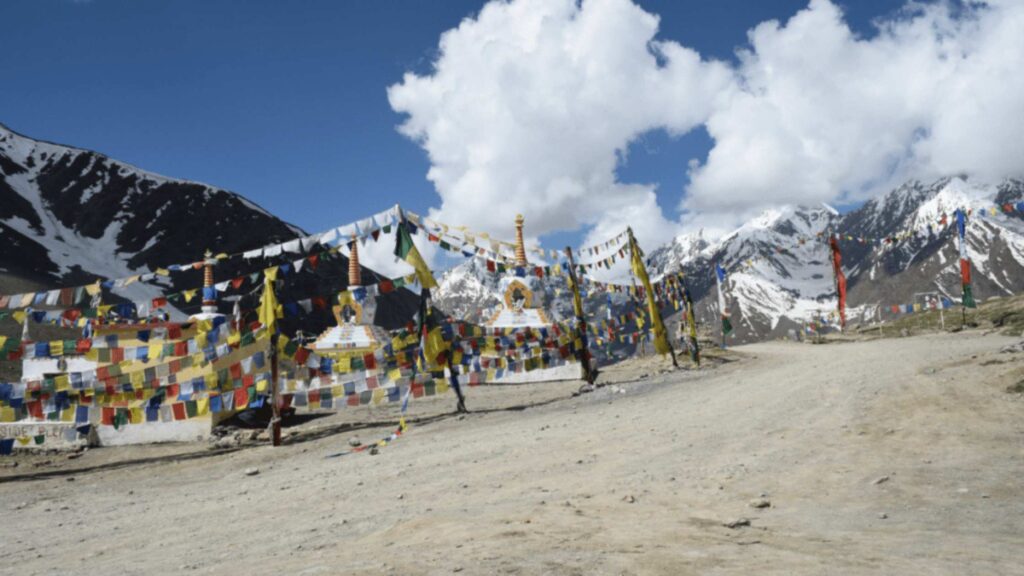
From the Manali side (Atal Tunnel → Gramphu → Batal → Kunzum → Losar → Kaza)
- Road conditions; you will have good pavement on the road into and through the Atal Tunnel; after you clear Gramphu, you will be on mixed surfaces of broken tarmac, gravel, embedded rocks, and wet creek beds, and some seasonal water flow, until Kunzum, and a mix of surfaces, but getting better yet after for Losar and Kaza.
- Fuel/Food/Cell Network points of access; should top off in Manali or Sissu, nothing available in between Monday or Tuesday of Batal, with possible some place for seasonal tea or dhaba (roadside restaurant) interspersed in and around the wilderness. Very little, if any, between Gramphu and Losar.
- Seasonality; early season (April), the streams from melted snow are raging by late morning so timing for these segments will be important to consider; October – November timing can have black ice on shaded bends and creek crossings.
- Start time; try to centrally target an early-am start to take advantage of a firm surface to ride and full daylight for ascending and descending.
From the Kaza side (Kaza → Losar → Kunzum → Batal/Gramphu)
- Character: the ascent is a persistent climb from Kaza through Losar to a steeper ascent at the CV pass; after nearing the top, the weather changes much faster and greater.
- Turnback logic: if the wind gets strong, clouds move in, or it starts flurrying, return back to Losar. Losar has some shelter, hot drinks, and a basic stay. When dusk has begun, do not push thinking “just around the next bend” or hoping for something better.
- Services: Kaza for full services; Losar will have tea and some basic homestays (make arrangements well ahead of time if thinking of using in October-November).
If Kunzum is closed (reliable alternate via Kinnaur)
- There is winter-reliable access to Spiti between: Shimla → Reckong Peo/Kalpa → Nako → Tabo → Kaza (using NH-5/NH-505)
- You would want to take this route in winter (or any time of uncertain Kunzum status) due to less drama.
- You can pace yourself by adding acclimatization nights on this longer route approach, in order to avoid AMS after you arrive in Kaza.
Road Conditions & Vehicle Suitability

Surfaces: smooth tarmac close to Manali/tunnel → broken tarmac and gravel → rock shelves and selected streambeds from Gramphu to Batal/Kunzum → intermittent surfaces to Losar gradually improving toward Kaza.
Mountain Etiquette: drive slowly on blind shelves, utilize engine braking when descending, disperse front and rear, avoid traveling in low light during shoulder months.
The vehicle you would like:
- Sedan: do not consider this vehicle unless it is both very stable and you are within your desired time frame in the late August-September window; low clearance is a permanent hazard no matter the season. You generally do not want to even consider the October- November window.
- Compact SUV (front wheels): relatively fine in the August-September timeframe; June-July and October windows are good; November, beware unless you have the weather and reports coming in to indicate conditions are approximately to excellent.
- High clearance SUV (2WD): this is your best vehicle choice across everything, June to October. It may also be possible to consider vehicles out to November on a good day if you have a solid driver and good timing.
- 4×4 (Thar/Scorpio/4×4 SUV): I would prefer October-November timeframes. Added vehicle dependence on traction and recovery on icy rock and ruts.
November essentials: fresh, all-terrain tyres, snow chains where forecasts require them, recovery strap, shovel, and ideally a second vehicle for mutual support.
Best Time to Visit (month-by-month)
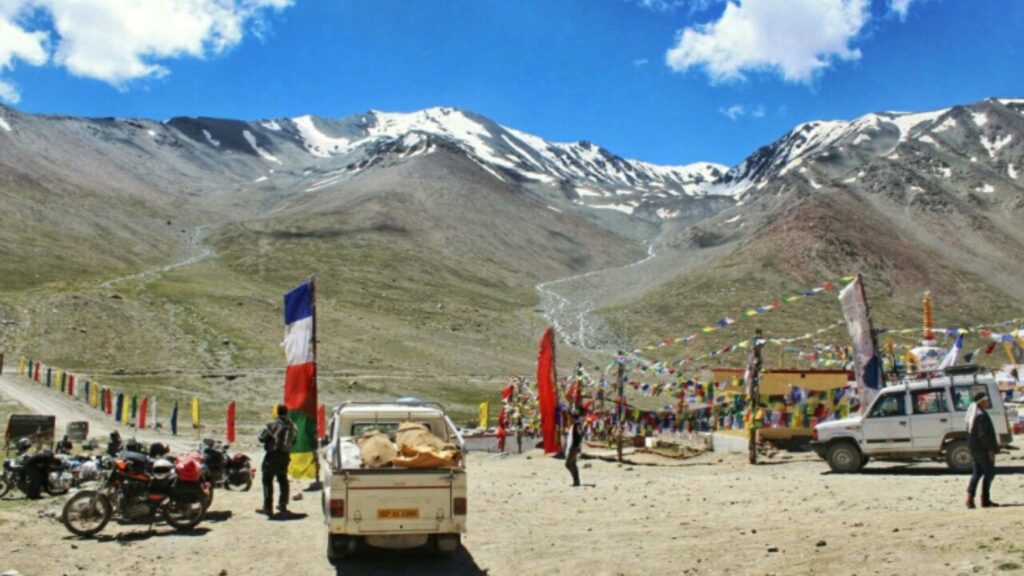
June–July:
- A fresh opening period with slush pockets and chilly mornings.
- By late morning, melt-water crossings can swell, so try to start at dawn and take it easy for the day.
August–September:
- The most stable window with lots of daylight and settled surfaces.
- After any rain, monitor rain issues along the approach road (Kullu/Lahaul).
October–November:
- Crisp air and golden light, although short days, risk for black-ice, and greater odds of closure.
- Think 4×4, early starts, and have a spare day in case a system rolls in.
December–May:
- Generally closed. If heading to Spiti in winter, reroute through Kinnaur.
Checklist in November:
- Choose the early start. Have a backup day. A plan for snow chains. Have a thermos with a warm drink. Pack plenty of extra layers. Be prepared to turn back quickly in case conditions worsen.
What to See & Do (nearby)
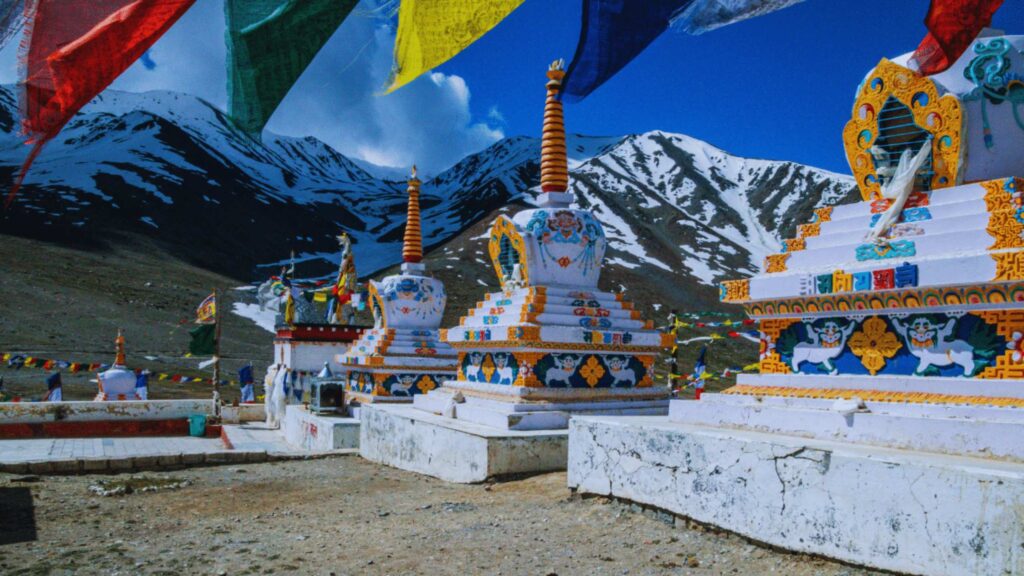
- Kunzum Devi Temple – a moment of devotion (although various travelers go around in a clockwise position). It is done in the name of previous travelers and/or family who have passed or are still traveling this road safely.
- Photography : Photograph at the top of Kunzum Pass from an overlook point on the ridge near the temple. As you look down, view the large, serpentine hairpin curves on either side of the road. In the morning you will want the long lens on the Manali side, and mid-afternoon you will want the long lens on the Spiti side. But only if you think you can come back in daylight!
- Chandratal (usually open for vehicle access in prime months): worth the detour at least once, but check it for open status along with nearby daylight hours. In shoulder season don’t go late in the day.
- To locate West: Losar village, Key Monastery, Kibber–Chicham bridge, Dhankar monastery and fort remnants, the Langza–Hikkim–Komic loop to locate fossils in sedimentary rock, and/or geology and culture of the high-village.
Safety, AMS & Connectivity
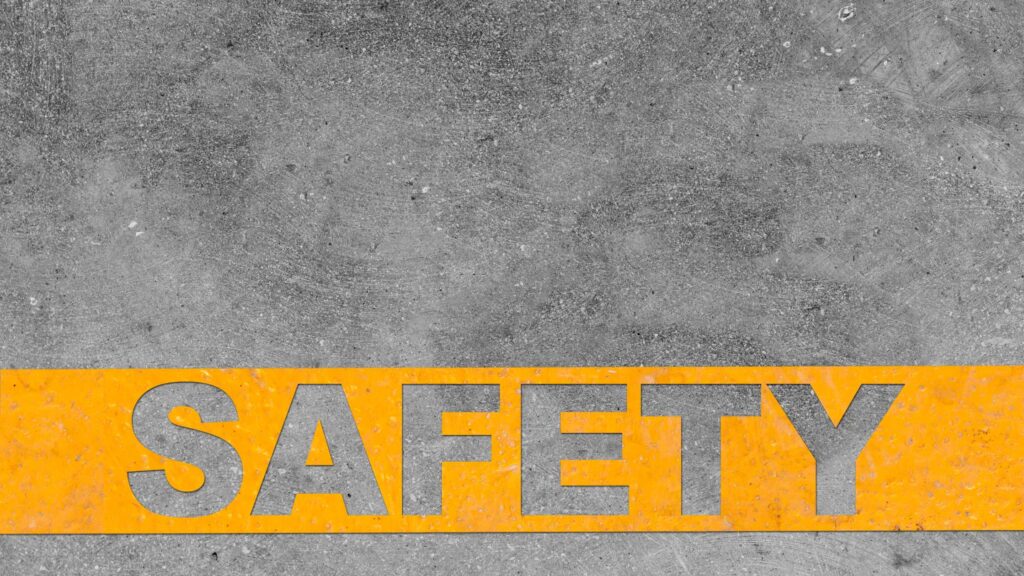
Basics of altitude and AMS:
- Ascend slowly; be aware of headache, nausea, altered mental status, unusual fatigue.
- If symptoms worsen, slow down, drink fluid, eat a snack or something light, and descend lower to a village.
Typical weather variability:
- The ridge can go from bluebird to whiteout in an instant, and the winds can be punishing.
- If the cloud ceiling drops or winds become strong, turn around; don’t chase sunsets in Oct-November.
Connectivity reality:
- No signal at Kunzum, almost no coverage at BSNL near Losar (and it was patchy). Good signal around Kaza and possibly Sissu/Manali.
- Download your offline maps before you leave Gramphu or Kaza
Emergency preparation:
- Keep a note of local helplines and accommodation numbers for Kaza/Losar/Sissu
- Bring a head-torch, spare batteries, power bank, basic first-aid kit, and AMS medication approved by your emergency physician.
If you are experiencing a breakdown:
- Stay with the vehicle, layer up, put out reflectors if you have them, be judicious with fuel, and wave to passing cars for help.
- If you are travelling in the shoulder months, if possible to do so, have another vehicle travel with you.
Costs & Logistics

- Private, high-clearance SUV (such as Innova/Hexa class): Around ₹5,500–₹7,500 for one day depending on the season, driver, and inclusions.
- 4X4 SUV (Thar/Scorpio 4X4, etc.): Around ₹6,500–₹9,500 for one day. Expect shoulder/winter surcharges.
- Fuel planning: The Gramphu ↔ Kunzum ↔ Kaza run can add an additional 250–320 km of low gear mountain driving; it is conservative to leave a 20-30% fuel buffer over your expected fuel needs.
- Terra-firma Food and Water: Remote stalls and the Batal side are pricey; stock up on snacks and a flask for hot drinks; back-up water.
Where to stay:
- Batal: ultra-basic and highly seasonal; suitable for experienced travelers who are comfortable for being with themselves in basic or even spartan shelter
- Losar: very limited homestays/guesthouses; pre-book during October/November.
- Kaza: your best base for re-fueling, ATMs, repair of items, acclimatisation, and a range of stay possibilities.
Packing list:
- Layered clothing system, windproof outer, gloves (a liner pair and an insulated pair), beanie, UV sunglasses, sunscreen, lip balm.
- Tyre inflator, tow strap, set of jump leads, duct tape, head-torch, power bank, small trash bags.
- For November: snow chains, extra thermals, hand warmers, emergency foil blanket, good vacuum flask.
Micro-Itineraries (choose your style)

- One-day explorer from Manali (peak months only):
- Manali → Atal Tunnel → Gramphu → Batal → Kunzum → return.
- Start well before sunrise, carry fuel/food, set a hard turn-back time. Skip if status is uncertain.
- Manali → Atal Tunnel → Gramphu → Batal → Kunzum → return.
- Half-day from Kaza (seasonal):
- Kaza → Losar → Kunzum → return.
- Begin early; if the ridge is socked in, turn back at Losar.
- Kaza → Losar → Kunzum → return.
- Chandratal bolt-on (when open):
- Add to the Manali-side explorer day via Batal only with stable weather and ample daylight.
- Add to the Manali-side explorer day via Batal only with stable weather and ample daylight.
- Bikers:
- Top up to the brim, carry 2–3 litres of water per rider, start early to beat winds, maintain spacing on gravel, never overtake on blind corners.
- Top up to the brim, carry 2–3 litres of water per rider, start early to beat winds, maintain spacing on gravel, never overtake on blind corners.
- Families (peak months):
- Base in Kaza for two nights, attempt a Kunzum day trip only on a truly stable day, prioritise early starts and AMS-safe pacing.
- Base in Kaza for two nights, attempt a Kunzum day trip only on a truly stable day, prioritise early starts and AMS-safe pacing.
Responsible Travel & Local Etiquette
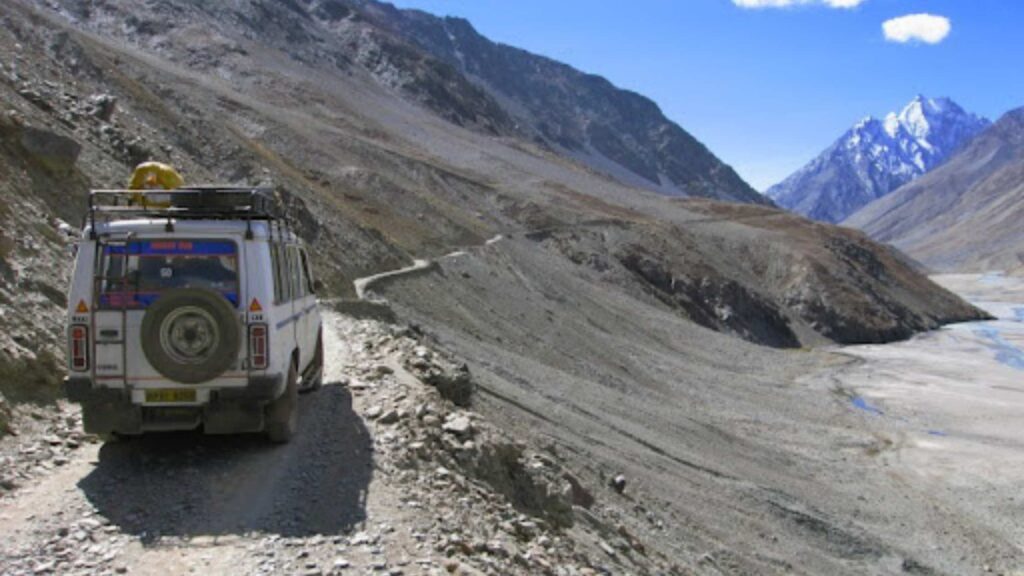
- Honor the Kunzum Devi Temple: be quiet, do not play loud music, and dress modestly.
- Stay on the marked trail: any trail that runs off the marked area will compact fragile alpine soil for years.
- When crossing a river: yield correctly but maintain pedal consistency, and do not fight the track.
- Pack out everything that is trash including tissues and wrappers; and clean up the ridge area for the next hikers.
FAQs
- Is Kunzum Pass open in November?
Sometimes in early November during clear spells, but closures become common after fresh snow. Always confirm same-day status before you commit, and start early. - Best month to cross for first-timers?
August–September for stability, daylight, and friendlier surfaces. - Can I do Kunzum in a sedan?
Only in late August–September on very stable days; underbody risk remains. A high-clearance SUV is strongly preferred. - Where do I refuel between Gramphu and Kaza?
There is no fuel pump on the pass stretch. Tank up in Manali/Sissu or Kaza and keep a 20–30% buffer. - How far is Kunzum from Manali, Kaza, and Chandratal?
Manali → Kunzum roughly 120–140 km; Kaza → Kunzum roughly 75–80 km; Batal → Chandratal roughly 14 km (seasonal road). - Do I need special permits for Kunzum?
Typically, there is no specific permit just to cross Kunzum. Carry valid ID and follow district advisories; rules can change. - What if the weather shuts the pass while I’m en route?
Turn back early to safer hubs—Losar on the Spiti side or Batal/Gramphu on the Lahaul side. Do not linger at the top in a whiteout. - Is there a mobile network at the pass?
Generally no. Expect patchy BSNL near Losar, with stronger coverage at Kaza and Sissu/Manali. - Kunzum in October vs November—what changes?
November brings shorter daylight, higher closure odds, and black-ice risk. 4×4 and snow-readiness gear matter. - Family trip vs biker trip—what’s different?
Families should build in acclimatisation nights and travel in mid-season. Bikers need wind planning, fuel discipline, and even earlier starts.
Also read: Spiti Valley in December 2025: Is it Safe for European travellers?
